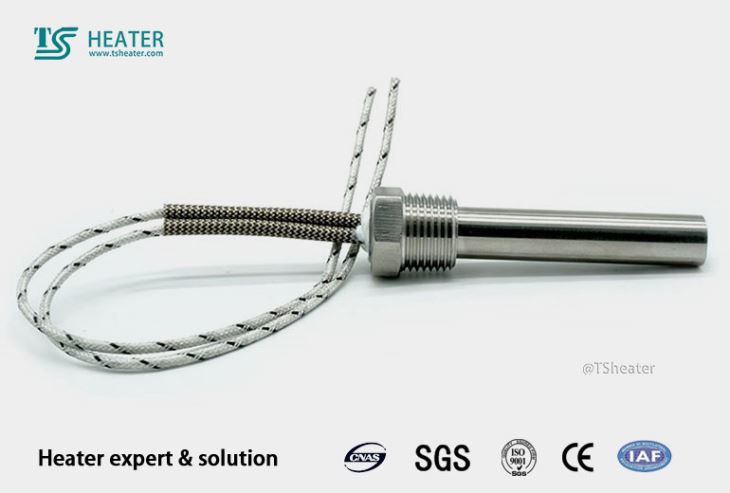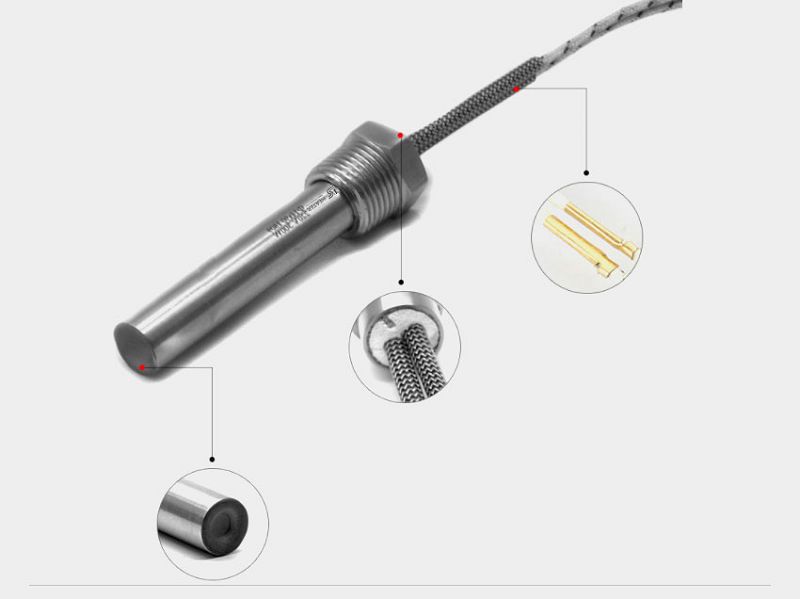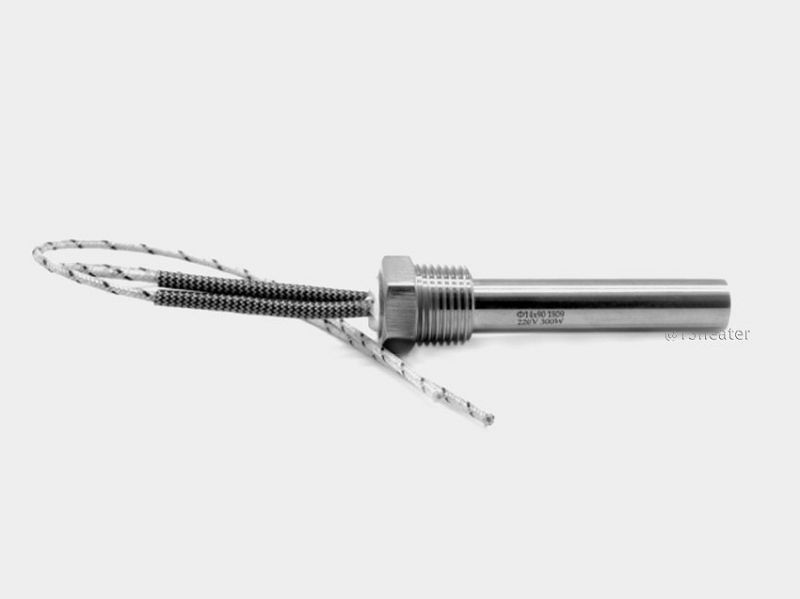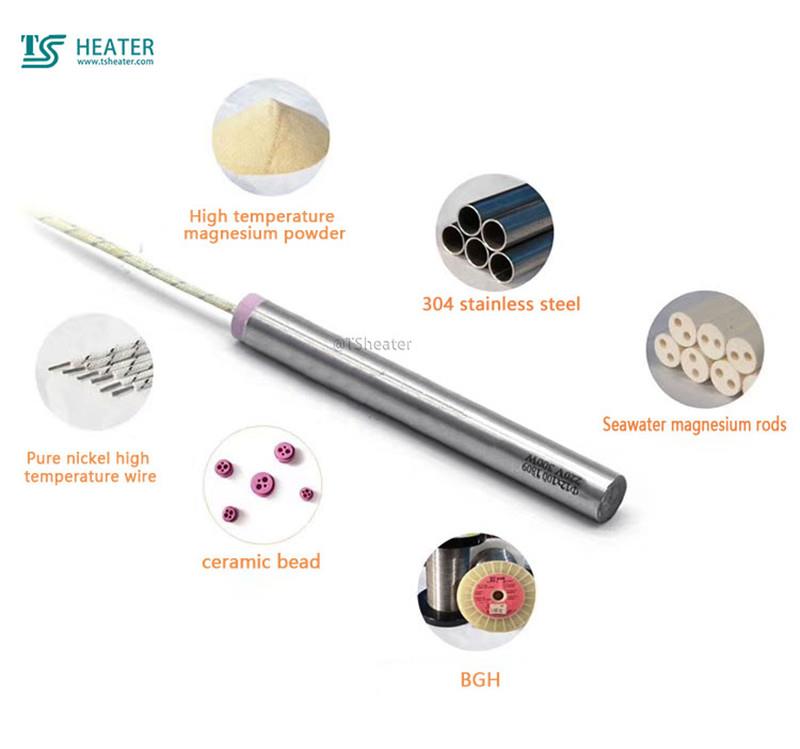
As a very widely used heater,Heater Cartridge Construction permits higher watt densities. Standard SS316 and optional Incoloy 800 sheath provide good thermal conductivity and resistance to corrosion and scaling.Heater Cartridge
Our products are exported for the USA, the UK and so on, enjoying a fantastic status among the clients for stainless steel mandrel bends, flexible mica sheet, whirlpool hot water heater element. We hope to create success together, and each of our members is driven by the spirit of continuous improvement and personal growth. We pay attention to details and strive for perfection, with years of dedication and persistence in quality. We have constructed strong and long co-operation relationship with an enormous quantity of companies within this business overseas.
As a very widely used heater,Heater Cartridge Construction permits higher watt densities. Standard SS316 and optional Incoloy 800 sheath provide good thermal conductivity and resistance to corrosion and scaling. Heater Cartridge
Features: Heater Cartridge
● Max Sheath Temperature 800°C (Depend of sheath material)
● 6V ~ 480V Voltages
● Dia.3mm to 30mm
● High Purity MGO
● Glass filament blanket
● 12” standard lead wire length
● Crimped On Lead & Swaged In Lead
● Custom design or built in thermocouples are available
Application:
● Semiconductor chamber heating
● Semiconductor wire & die bonding
● Humidity Control
● Patient comfort heating used in medical devices
● Mold die and platen heating
● Seal bars used in packaging equipment
● Test sample heating in gas chromatography equipment




Each Heater cartridge is carefully designed

Construction of a cartridge heater may be divided in 6 main parts:
1.Heating coil
The heating coil is the actual resistance which is where the electrical load occurs. The most common type of metal alloy used for this purpose is a nickel-chromium mixture, also known as nichrome. The nichrome wire is wound around a ceramic core, and the number of spirals per inch vary according to the requested watt density. Potential from an alternating current source, which can either be 2 phase or 3 phase, flows through the coiled nichrome wire, heating up the wire, which in turn, heats the cartridge heater sheath.
2.Insulation
Insulation is used to prevent the nichrome coil contacting the sheath, an event that would ground the resistance and could produce a catastrophic short-circuit, resulting in a melted sheath and a major equipment failure. Damage can be mitigated by installing a ground fault interrupting circuit. To prevent the coil from touching the sheath, the coil is inserted into the sheath, and immediately filled with magnesium oxide (MgO). To ensure the MgO fills the empty space between the sheath and the coil, the cartridge heater is filled under vibration.
3.Sheath
The sheath is the part of the cartridge heater which makes contact with the material or substance to be heated. Several metal alloys are used, depending on the type of application, such as highly acidic or corrosive environments. The most common types of sheaths are 304 stainless steel, 316 stainless steel, and incoloy 800. Incoloy has the highest temperature rating, and is considered a superalloy.
4.Sealing
After the cartridge heater has been filled with MgO, a seal is applied to the open end of the cartridge heater (where the nichrome coil was introduced). This prevents the coil and the MgO from coming out, as well as preventing contaminants such as plastic debris, air, or moisture from entering the heater.
5.Termination
Since cartridge heaters are installed in a wide variety of machines, manufacturers must design the heaters to meet certain clearances.[7] [dead link] The cartridge heaters might be terminated with the leads coming out straight, or in a right angle. Also, manufacturers must be careful that the leads are not exposed to temperatures higher than the maximum rating for the lead wire. In order to prevent lead wire damage from temperature, movement or contamination, the lead wire can be protected with a metal conduit, braided metal or silicone sleeves.
6.Lead wire type
Depending on the clearance and the design of the machine where the cartridge heater will be inserted, the type of wire used will vary. Fiberglass is the commonly used for cartridge heaters and other high-temperature applications, such as automotive wiring harnesses and industrial equipment. Other variants used are silicone impregnated fiberglass and silicone rubber.
We are guided by science and technology, driven by the quality of talents and develop new markets with quality and reputation. Relying on advanced production technology, flexible business methods, excellent products, and high-quality services, we provide customers with high-quality Electric Cartridge Type Heating Resistance Heater. The tenet of our company: honesty is the cornerstone, quality is the guarantee and win-win is the goal. We look forward to receiving your reply soon.